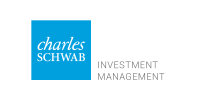How to Buy Your First Shares On The Stock Market
Contents
A Checklist For Buying Your First Ever Stock
If you’re considering taking the plunge into the stock market and buying your first ever shares, it’s probably a good idea. Although the stock market goes up and down and can have bad patches, historically, investing in shares has offered much better long term financial rewards than holding cash, even in a higher interest savings account.
Even though interest rates have been hiked slightly over the past couple of years they are still reasonably close to historical lows. That means that when you keep cash in a bank account, regardless of whether it’s a current or savings account, interest rates are miserly. The absolute best return you can get with specialist accounts is 5% and that is only for a short period of time, your money will probably be locked up for a certain period and the top interest rate will only apply to a few thousand pounds. Most current and savings accounts that offer an interest rate that applies to all of your money all of the time offer an interest rate well below 2% under current market conditions. And with inflation rates currently above 2% and not expected to fall below that over the next couple of years at least, that means holding cash actually means losing money once inflation is considered.
Which is why more and more people are turning to investing in stocks for the first time. In comparison, recent research by asset manager Schroders shows that if you had invested £1000 in the stock market in 1993, in the MSCI World index, a cheap fund that tracks international stock markets, you’d have made an average annual return of 8.3% over the period between 1993 and 2018. And those years weren’t all plain sailing, including a couple of stock market crashes, particularly the international financial crisis of 2008-09.
So while there are no guarantees that the next 20 years will play out in the same way, the entire history of the stock market to date has been one of cycles. Markets go up and down for a number of months or years. But over the long term, at least until now, they have always kept going up as a general trend. That makes investing in the stock market a wise choice when it comes to long term savings such as for a pension or child’s education or a helping hand with the deposit for their first ever property.
So how exactly do you go about buying your first stock?
Open a Stock Broking Account
Your first step is to choose an online stock broker or stock broking app and open a stock broking account. Without one you can’t buy shares as these services are required intermediaries between you and the stock exchange itself.
There are different kinds of stock brokers at different price points. Some only offer stock broking services, others also offer funds and other kinds of investments such as bonds and even financial advice from a qualified professional, for an additional fee. Many but not all offer tax efficient wrappers such as ISAs and SIPPs and some come with additional services such as research and analysis, special tools to track your investment portfolio, live market prices and more. To compare the options, considerations and process, take a look at our article on how to decide what kind of stock broker is right for you.
Choosing Your First Stocks
Once you’ve opened a stock broking account, if you haven’t already taken financial advice from a qualified professional, you’ll have to decide what the first stock you will invest in is. You should, in fact, decide upon a selection of different stocks as putting all of your funds into just one stock, even at the beginning of your portfolio is not a good idea. While you may have utmost confidence in the prospects of a particular company whose stock you want to invest in, there is always the chance you are wrong and the stock’s price will fall over the long term.
There are so many factors that influence the future success of companies that it is never possible to always be right. A key part of investing in stocks successfully is always spreading your risk. You will always make some stocks that for one reason or another fall in value and resulting in a loss. But that will not have too a negative effect on the returns of your whole portfolio if you diversify the risk across at least 15 or 20 different stocks.
Stocks of different kinds of companies in different stages of maturity also tend to behave differently to each other and so suit different investment aims. Some of the main ways that investors group stocks together in categories are:
Income stocks: these are shares in companies that are usually well established, very big and in a relatively stable industry and mature market, the demand for which is not tightly tied to current consumer sentiment. This kind of company will still go through periods of growth or contraction but usually these take it back to a stable, mean average value based on a multiple of profits. Their stock market value will still be influenced by general trends of a bull or bear market but usually won’t react with the same volatility as other companies whose income is less stable.
Value stocks: these are shares in companies an investor believes are undervalued by the market in comparison to their true worth based on revenues, profits or assets. Stocks can be undervalued for a number of reasons such as a previous period of poor performance that has now been recovered from, a scandal having hit the company’s reputation or worse financials before the release of a successful new product or service. Sometimes there is a lag between these factors becoming a reality and markets pricing that in to the stock’s value.
Growth stocks: these are shares in companies that are still growing quickly, usually because they are in a relatively new market. During their growth phase the focus of investors is on growing revenues and market share and less about current profits. This kind of stock is valued by markets based on its future optimal potential, or at least long term potential. Growth stocks rarely pay dividends as they re-invest profits into further growth such as entering new markets, developing new products and building their brand. Examples of typical growth stocks would be the big tech companies such as Apple, Facebook and Alphabet or Amazon.
Most stock market portfolios will combine stocks from those different categories with their relative size of overall contribution depending on the age of the investor or when they want to draw down their investments. Younger investors can invest more in riskier growth stocks or those in cyclical markets prone to changing fortunes. If the portfolio loses value it has plenty of time for the stock market cycle to turn and recover those losses before they would need to be locked in by selling the shares. In the meanwhile, these companies usually deliver the highest average returns, particularly over a period of a few years.
Income stocks and value stocks will be most targeted by more mature portfolios who want to minimise volatility during down time as the intention is the investments will be sold and converted to cash over the next few years.
Index Tracker ETFs: while not exactly a stock, ETFs, the abbreviation of Exchange Traded Funds, can be traded during market hours like stocks. ETFs that track indices are a great way to diversify investment risk and have historically delivered strong returns over the long term. The mirror the performance of a stock market index like the FTSE 100, FTSE All-Share or Nasdaq.
Before buying your first stocks you should do some research and make sure you are taking informed decisions. If you don’t feel competent to do so you should seek the advice of an IFA.
Recommended Financial Products
Suggested For You
Most Popular Articles
Featured Reviews




